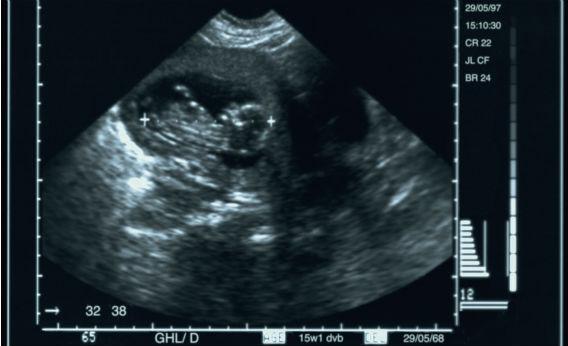When I was pregnant with my first child, I got an important call from my doctor’s office. I remember very little of the specifics aside from where I was standing (on the sidewalk, outside of a management training seminar I had to do for work), and the dread I felt as the call proceeded. I’d had a prenatal screening, and the medical professional on the other end was telling me that the fetus was at a higher than average risk for one of the disorders they were screening for.
I no longer remember what disorder it was; what I remember was the sense that my future lay in numbers I didn’t understand. I scribbled down the odds—my chances versus those of an average 33-year-old mother—and tried to parse them. What does a 1-in-385 chance look like? The numbers were so precise that I trusted them as wholly scientifically accurate. The elevated risk seemed ominous, even though I knew there was a much greater chance the baby would be okay. And she was.
The New England Center for Investigative Reporting has a story out that should alarm every woman who’s recently had blood drawn for a prenatal screening. Beth Daley reports that, “sparked by the sequencing of the human genome a decade ago, a new generation of prenatal screening tests…has exploded onto the market in the past three years. The unregulated screens claim to detect with near-perfect accuracy the risk that a fetus may have Down or Edwards syndromes, and a growing list of other chromosomal abnormalities.”
The problem is, they don’t. Daley reports that while these non-invasive prenatal tests are more accurate than the combination of blood test and ultrasound—which is probably what I had five years ago—they nevertheless can lead to false alarms as much as half the time. The rarer the condition, the greater the risk of false alarm. And yet they promise things like “99% Accurate, Simple & Trusted.” Worst of all, Daley reports cases where women aborted based on those screening results alone, without getting confirmation from amniocentesis. Three fetuses aborted after high-risk results at Stanford University were later studied and found to be healthy. Daley writes:
In one of the three Stanford cases, the woman actually obtained a confirmatory test and was told the fetus was fine, but aborted anyway because of her faith in the screening company’s accuracy claims. “She felt it couldn’t be wrong,” Cherry [Athena Cherry, a professor of pathology at Stanford] said.
There’s a lesson here: Just because your doctor gives you a specific number, with decimal points or a percentile after it, doesn’t mean that’s a real representation of your risk.
The problem with the new class of prenatal screenings, which look at placental DNA in the mother’s bloodstream, is that these companies’ tests are not regulated by the FDA due to a loophole that dates back to the 1970s, Daley writes. So there’s no one evaluating their claims of accuracy. Many doctors appear not to understand how predictive the tests they’re giving are, since they often get information about a test’s purported accuracy from the salespeople selling them the tests. Genetic counselors should be stepping in to explain the tests’ limitations to patients, Daley writes, but that’s not always happening. She points to an apparently smaller but growing group of women who gave birth to severely ill babies—some of whom died within days—after screens showed their fetuses at minimal risk. (In a separate story, she outlines one of these stories, and another about a healthy baby born after a prenatal screen predicted, supposedly with 97 percent accuracy, that he would be born with a fatal chromosomal disorder.)
The companies that make these tests say they’re studying the false positive rate, but they’re also poised to push back on the FDA’s looming efforts to regulate them. For now, the industry is policing itself, which doesn’t seem to be working out so well for a number of American women.
One the other hand, it did lead to one interesting finding, written up by another reporter for NECIR: One testing company funded a study in which blood samples were sent to several commercial labs that perform these screens, “claiming the samples were from women who were 12 weeks pregnant.” Three of the labs returned results indicating that the women were pregnant with healthy female fetuses.
The catch? The women who gave their blood samples weren’t pregnant at all.
